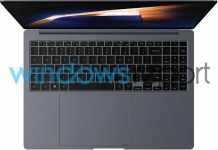James Webb showed that bright galaxies in the early universe are the result of intense star formation and not a failure of the standard model of cosmology. Computer simulations have confirmed that these galaxies become bright due to bursts of star formation
Bright galaxies discovered by the James Webb Space Telescope (JWST) in the early Universe may be the result of bursts of massive star formation. And this probably makes galaxies brighter for a particular era of their existence than expected. This conclusion was reached by researchers who created computer simulations of the birth of these galaxies and the beginning of star formation.
When JWST began observing in the summer of 2022, its observations of the universe quickly revealed high-redshift galaxies. These are galaxies that seemed to exist in the universe before astronomers had ever seen them. Galaxies that were visible when the universe was less than 400 million years old turned out to be brighter than the standard model of cosmology predicts for that epoch. This has led to claims that the standard model, which describes “beginning” as small galaxies and their hierarchical growth through mergers, must be wrong.

James Webb solved the mystery of bright galaxies in the early Universe
“The discovery of these galaxies was a big surprise because they were much brighter than expected. Usually, a galaxy is bright because it is large, but since these galaxies formed early in the life of the Universe, not enough time has passed since the Big Bang. How did these massive galaxies form so quickly?” says Claude-André Faucher-Gigour, part of a team led by Guochao Sun at Caltech that created simulations of the formation of the first galaxies.
They found that the galaxies observed by JWST are not large, but bright because they were observed during periods of active star formation. The simulations allow us to simulate not only the brightness of galaxies but also their density distribution, which is fully consistent with JWST observations.
Such bursts of activity are not unusual. Astronomers sometimes see them happening in modern galaxies—when galaxies merge. This process can cause the gas to mix in such a way that gravity grabs it and causes it to fragment and collapse, forming many stars at once. In the early Universe, where the environment was quite unstable, the first galaxies could not accumulate all their star-forming matter evenly.
We think that the following process occurs: groups of stars appear, and after a few million years these stars explode in the form of a supernova. Gas is ejected [from the galaxy] and then pulled back to form new stars, maintaining the star formation cycle.
In the early Universe, galaxies were much smaller than they are today and grew in part by accumulating clouds of intergalactic gas, but also by merging with other galaxies. The larger they became, the more gravity they had. And so they reached a point where they could accumulate more material to form stars. This stabilized the rate of star formation, and today galaxies such as our Milky Way form stars at a more relaxed pace.




